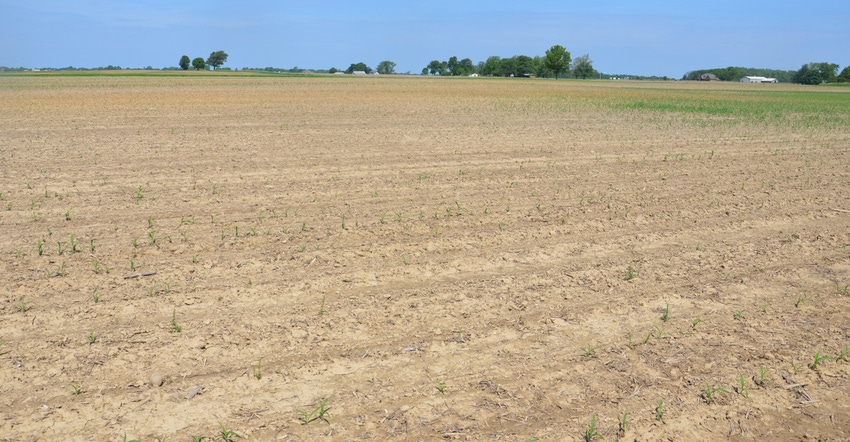
You planted corn, and conditions turned wet and cold. Emergence percentage didn’t meet expectations. What went wrong?
That’s a tougher question to answer than it sounds, notes Bob Nielsen, Purdue University Extension corn specialist. Seed or seedling diseases are possibilities, but there’s another potential cause. When soil temperatures are lower than 50 degrees F, the risk for imbibitional chilling injury to germinating seeds increases, he says.
Imbibition refers to the initial uptake of water by seed during the first 24 to 48 hours after planting in moist soil, Nielsen explains. If that first drink is relatively warm, germination processes will likely proceed normally. If it’s a very cold drink, there’s higher risk that the natural process could be interrupted.
When a seed imbibes water, rehydration causes that seed to swell and germination to begin, Nielsen says. Imbibition is a natural process. Even dry wood imbibes water. Imbibition will occur whether soils are warm or cold.
As seed rehydrates and swells, internal cell membrane structure is damaged. Under warm conditions, damage is quickly repaired by physiological activity that goes along with germination, and the germination process continues, Nielsen says. But if conditions are cold, cell membrane damage due to swelling is more severe, and physiological repair slows or stops. Left unrepaired, cell contents leak out and seeds die, Nielsen says.
Real-world situations in corn
Diagnosing chilling injury in the field can be difficult because germination is slower in colder soils anyway, Nielsen says. If you wait too long to check and seeds begin decomposing, you may lean toward disease as the cause. Daily or even hourly soil temperature records may help point toward chilling injury as a possible cause.
The risk is higher for soils at 40 degrees than 50 degrees, and risk increases if there are multiple consecutive days of cold soils, Nielsen says. Daily soil temperature swings are wider in dry soils than moist soils, resulting in lower daily minimums in dry soils.
Common sense would indicate chilling injury is more likely if you plant in April than in mid-May, and very unlikely if you plant in June. Yet the topsy-turvy 2019 season produced a unique situation that some experts believe resulted in chilling injury and extremely poor germination percentage in corn planted on June 14. It was the wrong day to plant corn in 2019. Steve Gauck, regional agronomy manager for Beck’s, Greensburg, Ind., notes there is usually a “wrong day to plant” each year, but it’s difficult, if not impossible, to pinpoint in advance.
“Some farmers were still planting corn June 14, and then a big rain pushed through overnight, and temperatures plummeted for the next couple days,” Gauck says. “We had corn on our own farm that simply didn’t germinate. It just never came up.”
Gauck observes that several other farmers in central Indiana reported the same results for corn planted June 14, 2019. Brand of seed didn’t matter — date of planting did. Corn planted even a couple of days earlier still germinated and emerged normally.
Meanwhile, Nielsen reports that recent work by Cornell University in New York indicates modern hybrids may not be as subject to imbibitional chilling injury. Still, he says it’s a real phenomenon and should at least be considered as a possible cause of germination problems under the “wrong” environmental conditions.
About the Author(s)
You May Also Like




